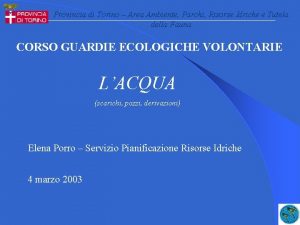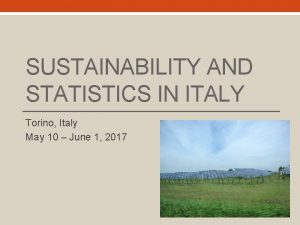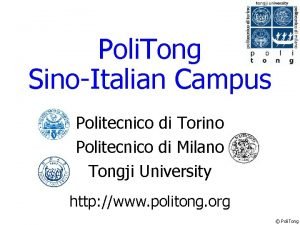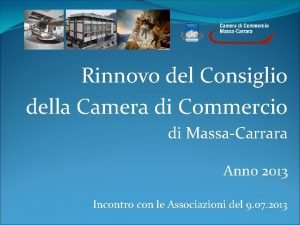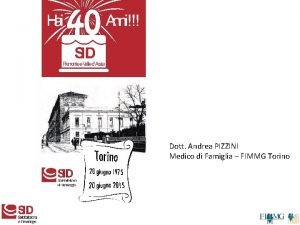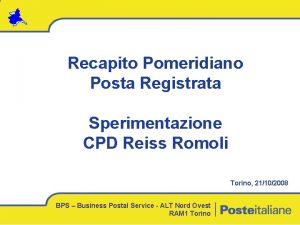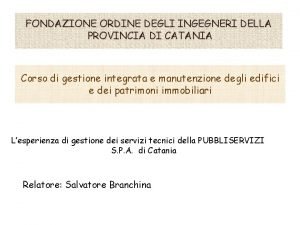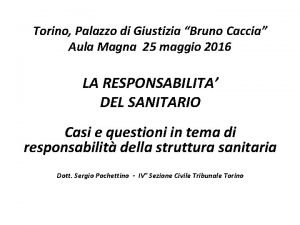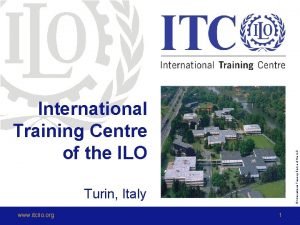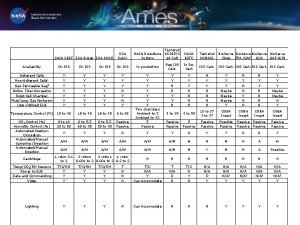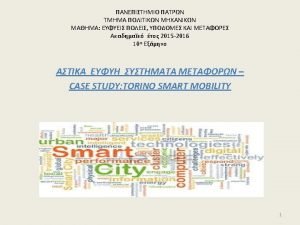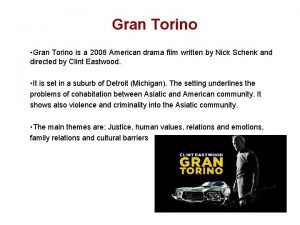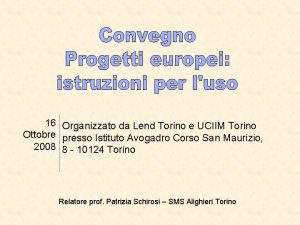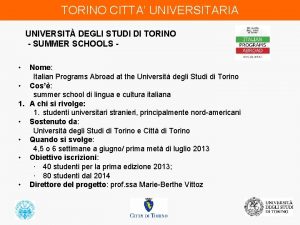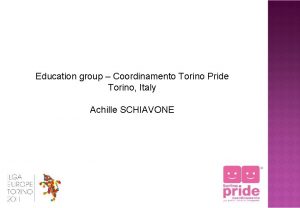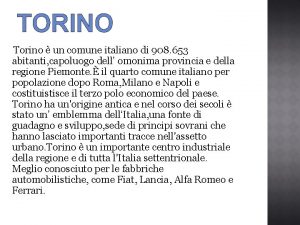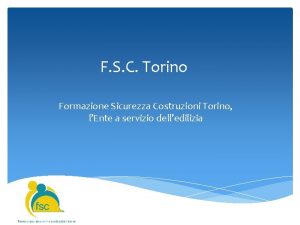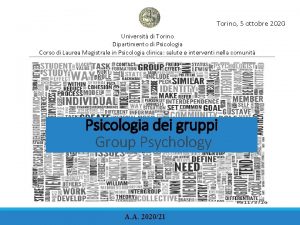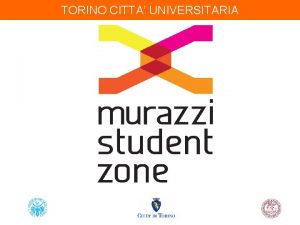ESA Conference 2013 28 31 August 2013 Torino
















- Slides: 16

ESA Conference 2013 28 -31 August 2013, Torino Facing the challenge of migration: local welfare systems strategies within a downsizing scenario Sandro Busso, Enrico Gargiulo, Michele Manocchi Dep. Of Cultures, Politics and Society – University of Turin, FIERI (Forum of International and European Research on Migration) NOTE: The presentation is based on a research project carried out between 2012 and 2013 by the Forum of International and European Research on Migration (FIERI), and supervised by Ferruccio Pastore and Irene Ponzo

Research questions and goals General aim: Examine the factors that influence the welfare systems’ capability to involve those groups whose needs go beyond the “traditional” services supply (while lacking funding for implementing ad hoc services) Two specific focuses: 1. The role of the so-called “migrant-specific” services 2. The impact of non-public actors and the structure of welfare-mix

Research design and methods Comparative study, based on the analysis of two Italian local welfare systems Multi-technique approach: 1. Quantitative analysis of secondary data 2. In-depth interviews (40) to key actors 3. Qualitative document analysis 4. Focus-groups (4) with key actors

The cases studied: TORINO and CUNEO Torino Cuneo

The cases studied: Main features TORINO CUNEO Urban Area Vast rural area High Population Density Low Population Density Very high presence of foreigners (14%) High presence of foreigners (9%) Traditional first destination Traditional settlement area, for migrants today (also) first destination Only one local authority for social services Different local authorities for social services Dissimilar cases to maximize variability

Migrants’ access to social services Share of migrants among social services users (%)

Migrants’ access to social services Share of social services users among residents (%)

1. Migrant-specific services Expenditure TORINO CUNEO Share of social expenditure for migrants specific services (Av. 2008 -2010): 4% Share of social expenditure for migrants specific services (Av. 2008 -2010): 2, 5% + + “Heavy” services (i. e. housing) “Light” services (i. e. cultural mediation and information desks) high per-user cost low per-user cost

1. Migrant-specific services Goals TORINO CUNEO Answer to specific needs Remove access barriers (since another municipal authority is responsible for informative tasks and guidance) to the services addressed to the population as a whole The “services equal for all” model in a context of downsizing: a political matter?

2. The welfare mix structure: Non-public actors financing TORINO CUNEO Very high Bank Foundations funding of social interventions Very low Bank Foundations funding of social interventions (around 32 mln €) (around 3 mln €) + + High share of expenditure for migrant-specific services Low share of expenditure for migrant-specific services (around 10%) (around 2%)

2. The welfare mix structure: Third sector’s supply TORINO CUNEO Outsourcing of public services + - Level of contribution from public to third sector’s organizations + - Number of “strong” and autonomous third sector organizations + -

TORINO: The “Welfare Mix Model” High coordination among suppliers USERS Low users’ overlapping

CUNEO: The “Public-centric Model” Lack of coordination among suppliers High users’ overlapping

Conclusions: key elements to overcome downsizing 1. Migrant-specific services can be used to overcome access barriers to the whole supply of services, with low unitary costs High level of inclusion and equality Good control over (public) supply “High road” to undifferentiated services High stress of public sector (with political consequences) Overlapping with private supply Weak overall supply

Conclusions: key elements to overcome downsizing 2. Participate and migrant-specific planning, sharing of responsibilities among actors High activation of private resources Low overlapping among actors Increase of the overall supply Low continuity of funding (related to the funding of fixed term projects) Weak control over supply (threats to universalism of rights) Precariousness of equilibrium (political issues and instability of networks)

Thank you for your attention! sandro. busso@unito. it enrico. gargiulo@unito. it michele. manocchi@unito. it www. fieri. it
 Esa multimedia.esa.int./multimedia/virtual-tour-iss
Esa multimedia.esa.int./multimedia/virtual-tour-iss Agile 2013 conference
Agile 2013 conference Vincenzo ilotte
Vincenzo ilotte Itis pininfarina
Itis pininfarina Risorse idriche torino
Risorse idriche torino Smart city torino
Smart city torino Torino
Torino Politong
Politong Capel bruno alta fronte
Capel bruno alta fronte Rinnovo smart card camera di commercio
Rinnovo smart card camera di commercio Andrea pizzini
Andrea pizzini Torino recapito reiss romoli
Torino recapito reiss romoli Fondazione ordine ingegneri torino
Fondazione ordine ingegneri torino Tribunale bruno caccia torino
Tribunale bruno caccia torino Ilo turin courses
Ilo turin courses San donato calcio torino
San donato calcio torino Timbrella
Timbrella




